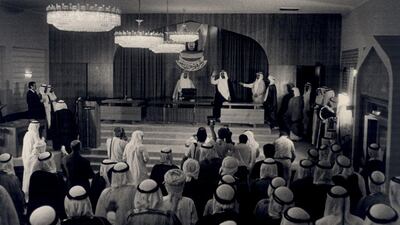There is a poetic symmetry about the celebrations due to honour two of the most significant buildings in Abu Dhabi and one that could not more perfectly bookend the remarkable story of a city and its people. November 11 marks the first anniversary of the opening of Louvre Abu Dhabi, the stunningly modern museum that showcases the ancient treasures of the region and bears elegant witness to the capital city's role as a leading actor on the world stage. And on December 7, after a decade-long restoration, the hoardings will finally come down around Qasr Al Hosn, the oldest building in Abu Dhabi.
An oasis in the heart of a bustling metropolis, the old fort stands in testimony to the ancient roots of the resourceful people who founded a city where once there was only desert. It is also evidence that renewal and regeneration are central to the spirit of a nation that is continually reinventing and reshaping itself.
Qasr Al Hosn has an exciting future as a living museum and home to a reinvigorated Cultural Foundation, visual arts centre, theatre and dedicated children’s library. Legend has it that in 1761, a Bani Yas hunting party from the oasis of Liwa forded the Maqta, the shallow stretch of water that separates the island from the mainland, in pursuit of a gazelle that led them to a vital supply of fresh water and, in time, gave the city its name.
Historians believe the original circular watchtower built about 1795 to defend the supply still stands at the northeast corner of Qasr Al Hosn, which was added to by successive rulers as the city grew around it.
The last major alterations were made by Sheikh Zayed in the late 1960s, at about the same time that archaeologists were unearthing evidence of the Umm Al Nar culture, a civilisation that thrived in Abu Dhabi over 4,500 years ago. The reopening of Qasr Al Hosn to the public is a tremendous opportunity for all residents of the city to reconnect with its past.
It is also a reminder that Abu Dhabi did not spring out of the sand at the first sight of the black gold. Rather, it emerged at a time when the single most precious commodity was not oil but water. Its foundation was merely one more chapter in the proud story of a people whose history reaches back over five millennia.

